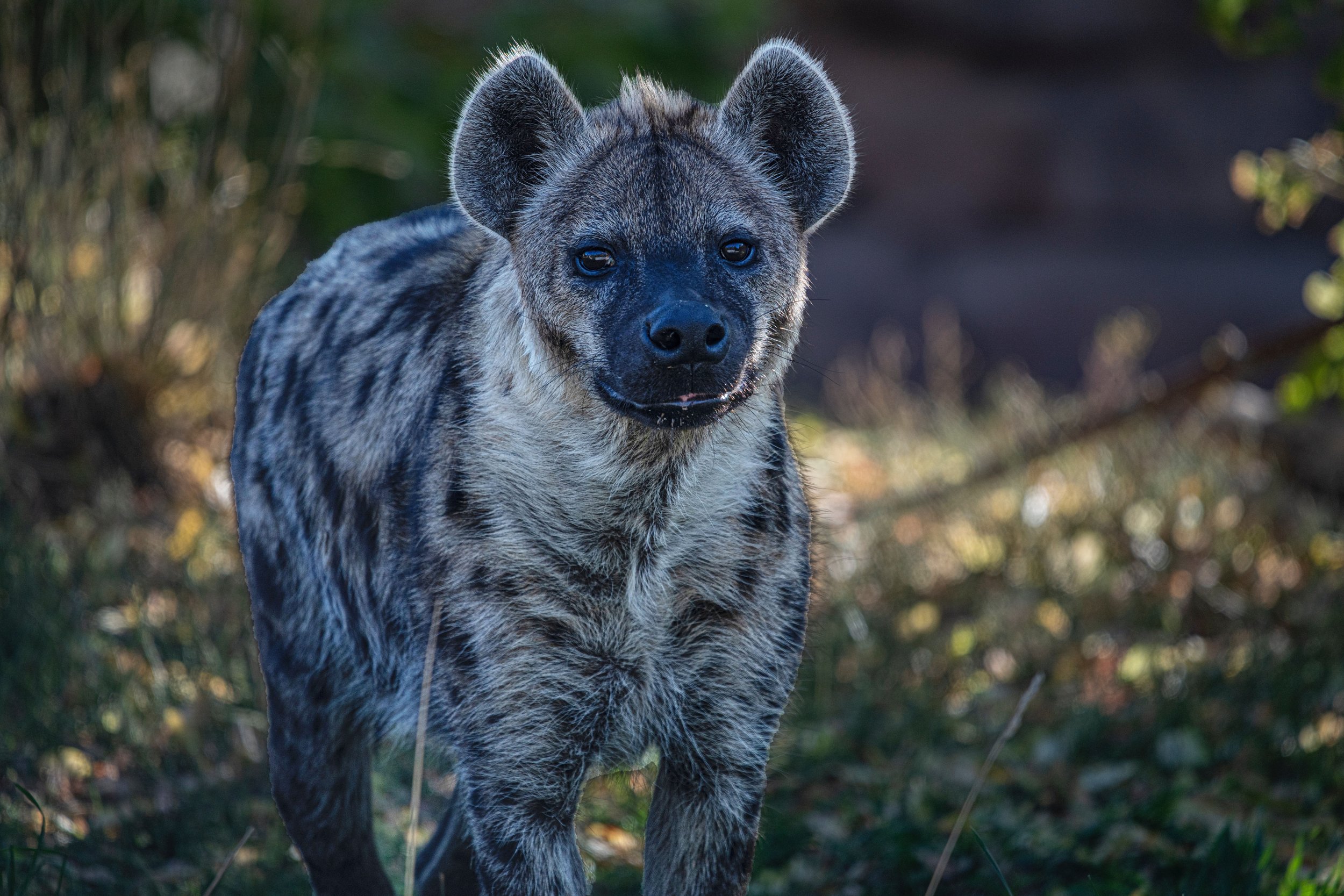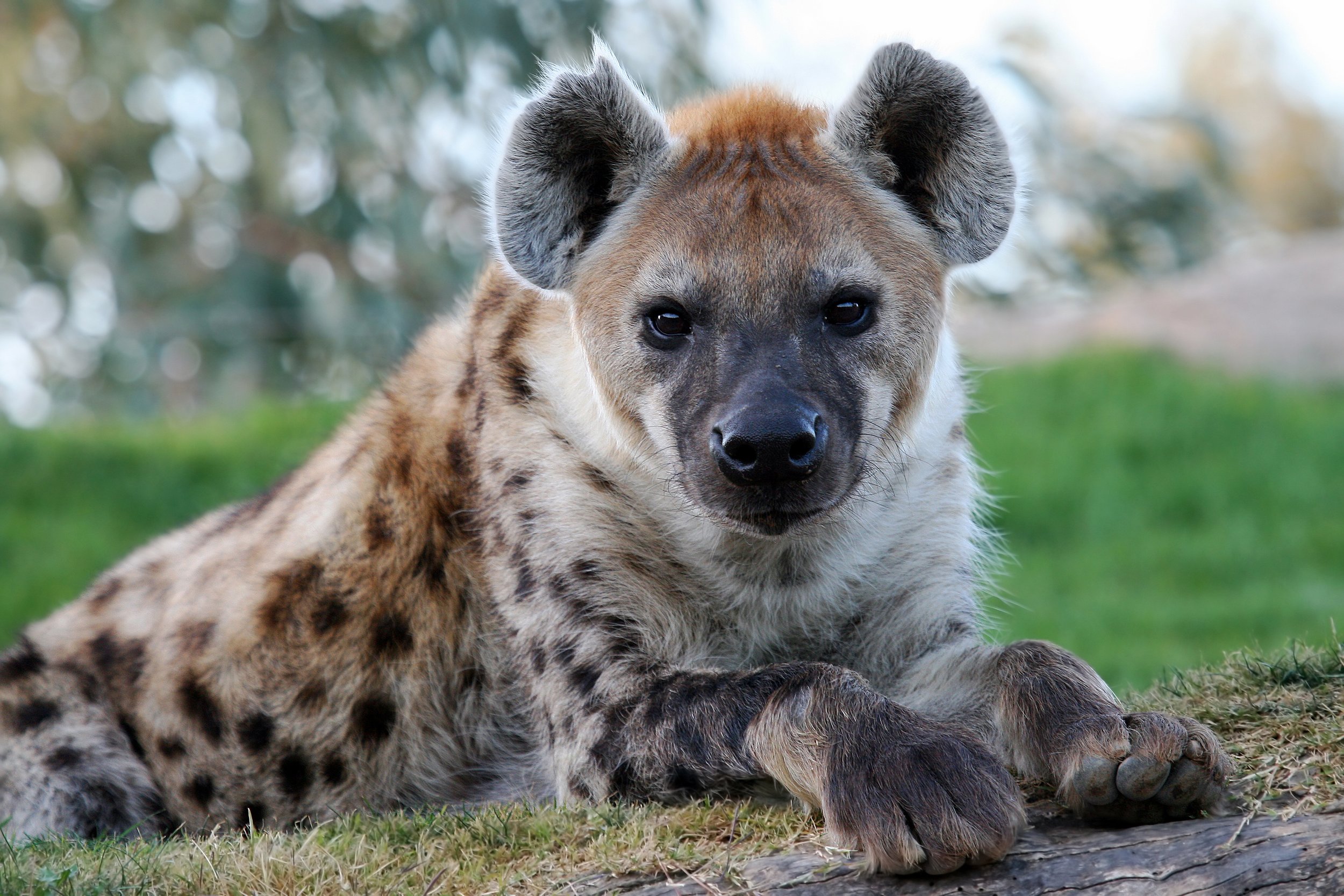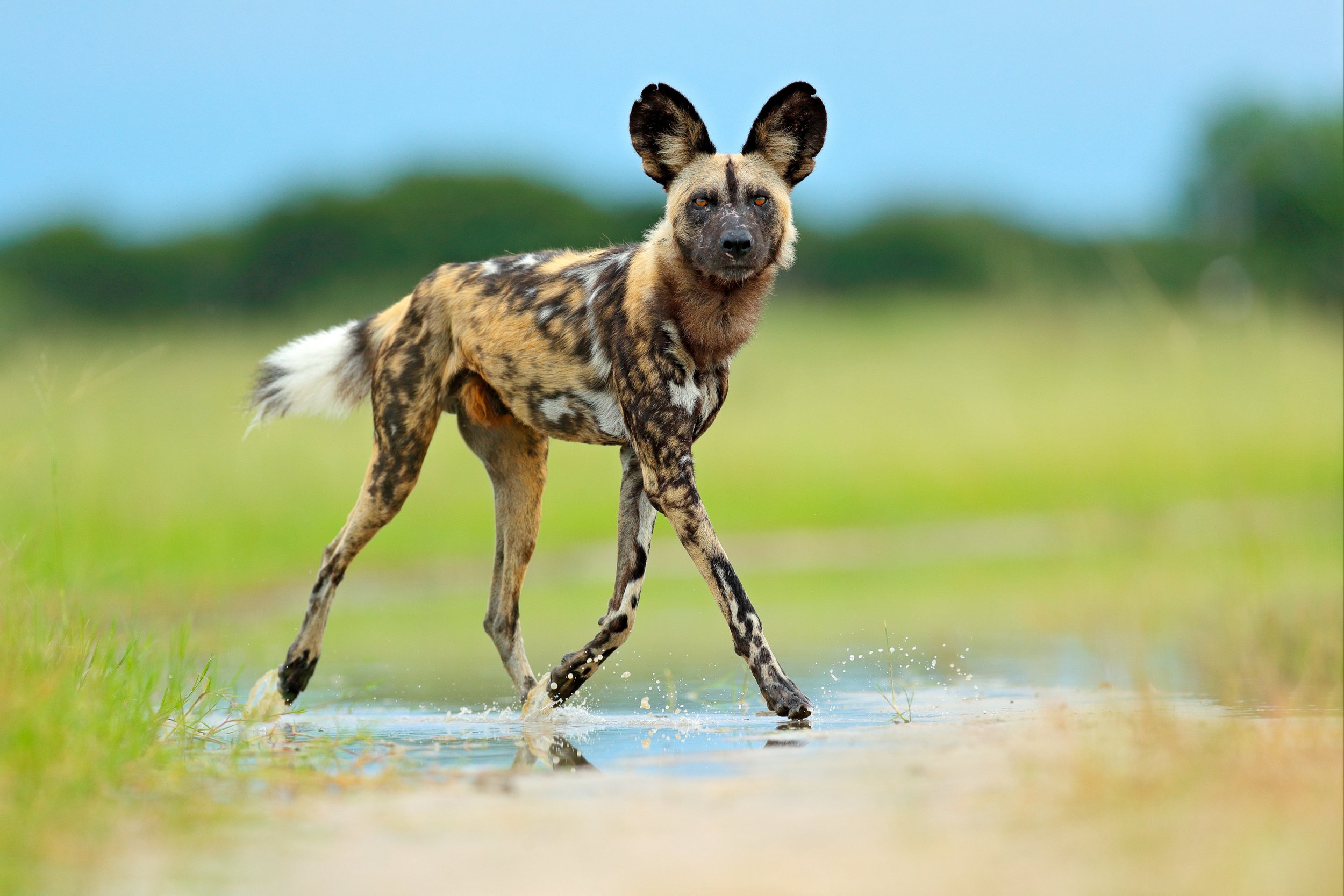Explained: African Wild Dog vs Hyena
Written by Zeldi Smulders
Imagine you are on a safari and you see a dog-like creature lurking around. Is it a hyena or perhaps an African wild dog? Wait, there’s a difference between African wild dogs and hyenas? Yes, hyenas and wild dogs are not the same animals. Frankly, hyenas aren’t even classified as dogs! No need to worry if you did not know this. In this article, you will learn how to distinguish between these animals by looking at factors like their appearance, distribution and behaviour. It’s just like spotting the difference between cheetahs and leopards or black rhinos and white rhinos. Sure, it’s difficult at first, but once you’ve got it, you’ve got it! Read on to master the art of telling an African wild dog and a hyena apart.
Species
Did you know that hyenas are actually more closely related to the mongoose? There are 4 species of hyenas, namely the aardwolf, spotted hyena, brown hyena, and striped hyena. To avoid confusion between the varying hyena species, this article will focus on the spotted hyena, the largest and most common of the group. On the flip side, the African wild dog is indeed a wild canine and goes by many names, like the Cape hunting dog or the African painted dog.
Physical Appearance
Size and body
The African wild dog is the largest of the African canines — measuring at 60 to 75 cm tall at their shoulders with a weight between 18 and 36 kg. Still, spotted hyenas with their short hind legs and long front legs are much larger and stronger than wild dogs, and can have a height up to 92 cm and a weight up to 86 kg!
Coats
The African wild dog is also known as the painted dog because of its blotchy caramel and brown fur. African wild dogs don’t all have the same markings, making it easier to identify individuals. You will notice that the tips of their bushy tails have a lighter colour, contrary to the black tip of the hyena’s bushy tail. As the name indicates, the spotted hyena has black markings or spots on their body and legs. With that, they have a sandy-coloured coat and a characteristic short mane on their neck and shoulders.
Face and ears
The African wild dog has big, round ears with darker markings on its face and brown shades around its eyes. The spotted hyena also has a darker muzzle as well as large ears, although their ears are smaller than those of wild dogs and slightly more pointed at the top. Can you see why they are part of the so-called Ugly 5?
Distribution
Some of the largest populations of African wild dogs are found in southern Africa. With a decreasing population, African wild dogs are listed as an endangered species due to factors like human-wildlife conflict. Meanwhile, spotted hyenas have a non-endangered or ‘least concern’ status and are found throughout much of Africa and even the Middle East and Asia.
Behaviour
Sociability
African wild dogs are generally social animals. The males tend to stick with the pack, while the females disperse after mating. Because of this, males often outnumber females 3:1 in a pack with an average of 7 to 15 members. A group of hyenas is called a clan or a cackle, a great representative name for this animal’s sound, and can have up to 80 members!
Habitat
The African wild dog is drawn to savannas and grasslands but will travel to woodland and hilly surroundings to reach their prey. Sadly, African wild dogs are suffering habitat loss and are under threat because of it. Hyenas have a preference to live in wide-open plains, savannas, and grasslands, but also tend to stay in arid desert land as well as semi-mountainous terrain.
Now it’s your turn! Can you tell the difference?
Left: Hyena; Right: African Wild Dog
Not the same after all, right? With these basic hyena and African wild dog facts, you are well on your way to differentiating between these fascinating animals. Now it’s time to visit Namibia, Botswana or South Africa to spot a spotted hyena or paint a picture of a painted dog! Book your trip with Viatu now.










